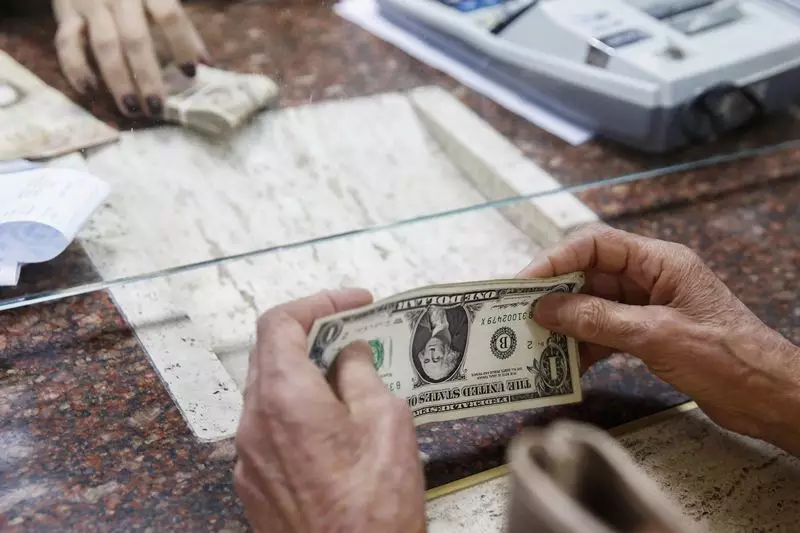As we dive into the nuances of this financial week, the ongoing developments in the currency market, particularly regarding the U.S. dollar and the Japanese yen, reveal much about the broader economic landscape. Factors such as domestic monetary policies, geopolitical tensions, and economic indicators are converging, setting the stage for what could be pivotal turns in currency values.
On the surface, the U.S. dollar has been experiencing a gradual upward trajectory. This week carries significant weight for investors and economists alike, given that the potential for interest rate cuts is under scrutiny. A mixture of economic sentiment and political narratives has started to shape expectations around the U.S. dollar’s performance. Notably, President-elect Donald Trump’s recent rhetoric warning BRICS nations against creating alternative currencies or facing punitive tariffs further clouds the landscape with uncertainty. His statements, delivered over the weekend, reflect a nationalist approach that might backfire or bolster the dollar in unforeseen ways.
The broader context in which the dollar operates reveals its ongoing strength despite volatility in other markets. Analysts from Capital Economics have elucidated that, while the outlook appears moderately optimistic for the dollar, there are significant barriers for further rate shifts favoring U.S. currency values in the immediate future. The dollar index plotting at 106.170 suggests that, despite fluctuations, the dollar has fortified against other currencies. The recovery narrative seems anchored by expectations for a modest jobs report on Friday, which anticipates the creation of 195,000 new jobs, potentially impacting Federal Reserve decisions going forward.
This Friday, all eyes will be focused on the employment figures, a critical determinant of the Federal Reserve’s approach regarding interest rate adjustments. A projected increase in the jobless rate might imply stagnation in labor market dynamics, potentially nudging the Fed toward a rate reduction of 25 basis points later in the month. However, it’s crucial to recognize that markets currently reflect a modest optimism wherein only limited cuts are forecasted for the year 2025.
Fed Chair Jerome Powell’s planned addresses this week will also play a vital role in shaping sentiment surrounding U.S. monetary policy. As other important economic surveys on manufacturing and services roll out, they will contribute to a more granular picture of economic health and labor force stability. The potential for a cautious approach from the Fed would likely influence the dollar’s perceived value in the realm of international trading.
Turning to the Asian markets, the yen has observed a peculiar rebound, driven by expectations of potential monetary policy adjustments by the Bank of Japan (BOJ). Recent statements from BOJ Governor Kazuo Ueda have hinted that interest rate hikes may be forthcoming, given positive economic data. Despite recent fluctuations resulting in a 3.3% decline of the dollar against the yen, support levels for the yen are becoming evident, particularly if economic growth signals continue to justify further monetary tightening.
The combination of healthy business investment growth and rising inflation rates in Tokyo has propelled markets to anticipate a 63% probability of a quarter-point hike at the BOJ’s upcoming policy meeting. Market analysts postulate that labor earnings might also present a solid uptick in data releases, heightening expectations for a robust wage round in the upcoming months. This expectation adds a layer of complexity to the currency landscape, as the yen’s value intertwines with Japan’s economic policy evolution.
On the European front, the euro continues to face headwinds amid political uncertainty in France. Recent developments involving the opposition National Rally highlight growing strains within the French government, raising the specter of a no-confidence vote that could derail Prime Minister Michel Barnier’s administration. Such political instability casts shadows over the euro, which has depreciated, settling at $1.0532 after an initial bounce from its yearly low.
Market sentiments are exacerbated further by expectations that the European Central Bank (ECB) may cut rates this month, a scenario underscored by predictions of a possible easing of 50 basis points. With France’s budget discussions lingering in uncertainty, the euro’s fate hangs by a thread as it navigates between broader economic principles and immediate political dramas.
As the currency markets brace for major shifts this week, both national and geopolitical factors will play pivotal roles in shaping investor sentiment and market movements. The dollar’s gradual rise against international currencies highlights a complex interplay of domestic economy strength and speculative pressures surrounding the Federal Reserve’s posture on rates. Meanwhile, the yen’s ebb and flow reflect Japan’s hurdle of inflationary adjustments and expectations surrounding wage growth. The euro, caught in the midst of political uncertainty, faces potential downward pressure unless clearer decision-making emerges from France. Accordingly, the confluence of these dynamics renders this week crucial for currency watchers and economic strategists alike.

